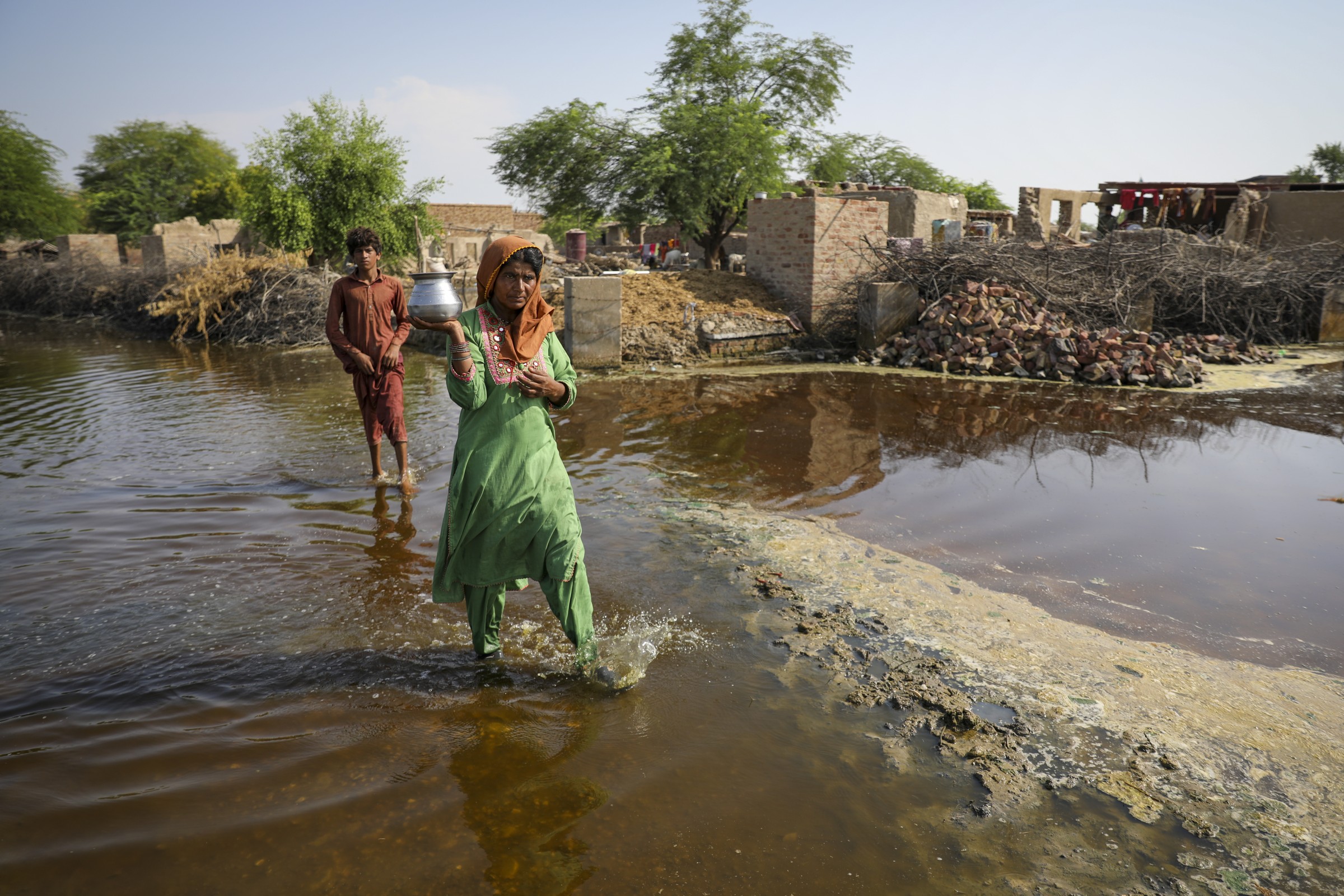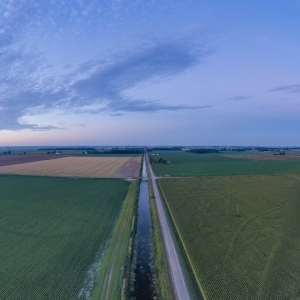Aid agencies race to ward off water-related diseases.

On 11 September 2022, a woman with her son wade through flood water after collecting drinking water from a hand pump in a flood-affected village in Sindh Province, Pakistan. Photo © Asad Zaidi/UNICEF
By Brett Walton, Circle of Blue – September 21, 2022
Weeks after record-setting monsoon rains turned vast tracts of Pakistan into an inland lake, health officials are concerned that a second wave of disaster is brewing.
All that standing water combined with at least 7.6 million displaced people who may lack food and clean drinking water is a recipe, they say, for outbreaks of diseases caused by dirty water and mosquitoes.
“Even after three weeks, large parts of the flood-affected areas are still submerged under water,” said Gerida Birukila, a UNICEF official in Pakistan. “Many of the roads and bridges have either been washed away or damaged. Thousands of families in the 81 calamity-hit districts are still cut off and desperately need support.
“Families have no food, safe water or medicines,” she added.
UNICEF reports more than 134,000 cases of diarrhea and 44,000 cases of malaria this week in vulnerable areas of Sindh, a province at the center of the storms. The agency and others in government and emergency response have dispatched supplies, mobile health clinics, and workers to the front lines who are attempting to reach families still cut off from services because of high waters or damaged roads.
Stoked by a third consecutive La Niña, this monsoon season has been exceptionally harsh in Pakistan. The southern provinces of Sindh and Balochistan saw the worst of it, each receiving in August between seven and eight times the average rainfall for the month. Nationally, it was the wettest August since 1961.
All that moisture pouring into the great bowl of the Indus Valley produced a grim tally of destruction. Satellite imagery suggested that perhaps a third of the country was inundated. According to the Pakistan government, more than 7,900 miles of roads have been torn apart, in addition to 374 bridges. Nearly one million livestock have been killed, eliminating a source of calories and earnings, while food prices have soared.
Public and private infrastructure was not spared. Thousands of schools and health clinics were damaged, along with more than two million homes that were partially damaged or completely destroyed. Many drinking water wells and sanitation systems are no longer functioning.
Then there is the loss of life. As of September 20, at least 1,569 people died in floods this season. Most of them lived in Sindh and Balochistan, as well as in Khyber Pakhtunkhwa, along the Afghanistan border.
Emergency responders should be prepared for more such disasters. Scientists who study the links between extreme weather and heat-trapping greenhouse gases in the atmosphere say that the supercharged monsoon bears the fingerprints of a warming planet.
Still, immediate needs are not being met. UNICEF asked donors for $39 million to assist women and children. The request, as of September 20, is only 31 percent funded.
Brett writes about agriculture, energy, infrastructure, and the politics and economics of water in the United States. He also writes the Federal Water Tap, Circle of Blue’s weekly digest of U.S. government water news. He is the winner of two Society of Environmental Journalists reporting awards, one of the top honors in American environmental journalism: first place for explanatory reporting for a series on septic system pollution in the United States(2016) and third place for beat reporting in a small market (2014). He received the Sierra Club’s Distinguished Service Award in 2018. Brett lives in Seattle, where he hikes the mountains and bakes pies. Contact Brett Walton




